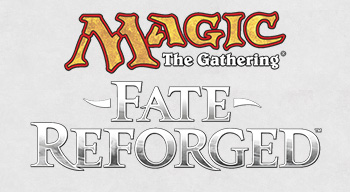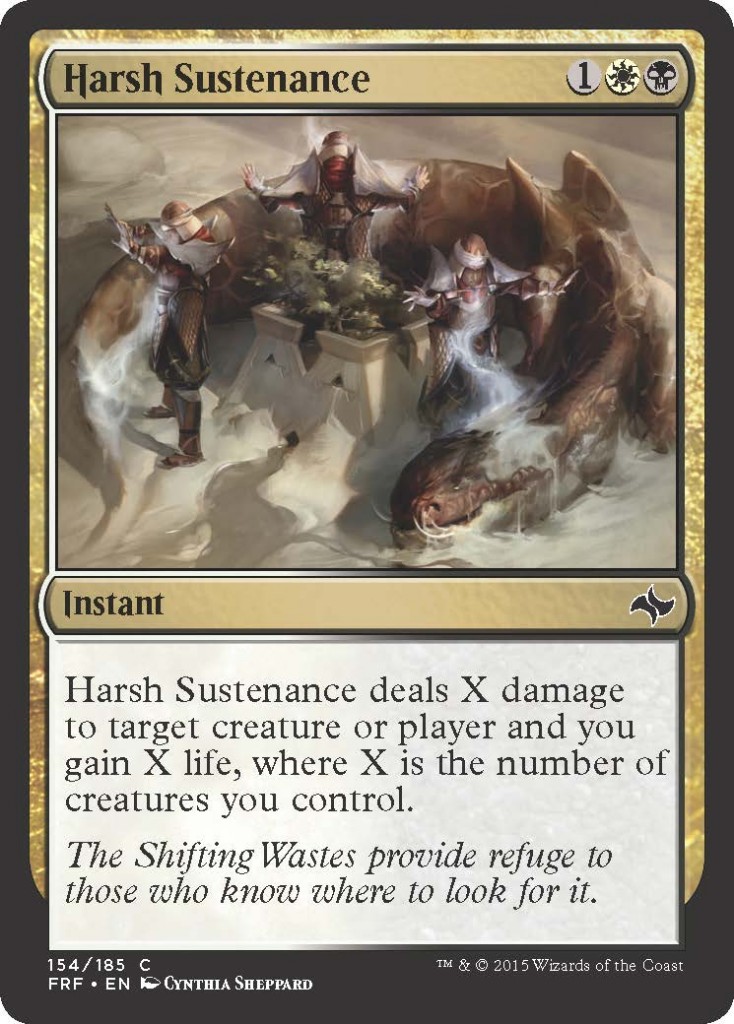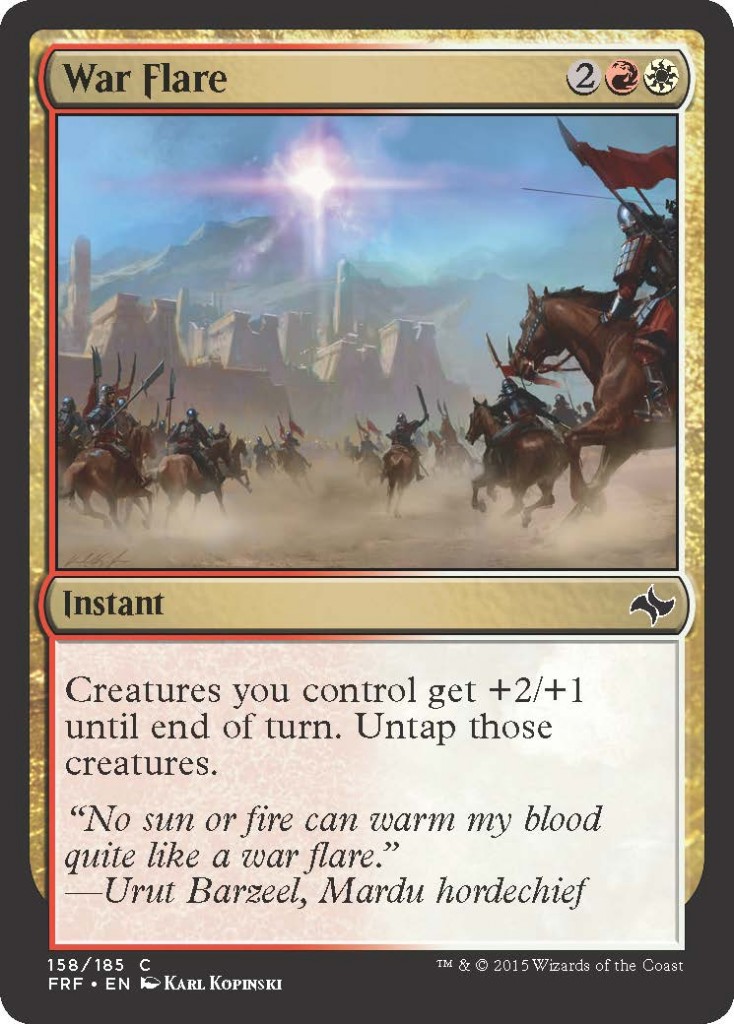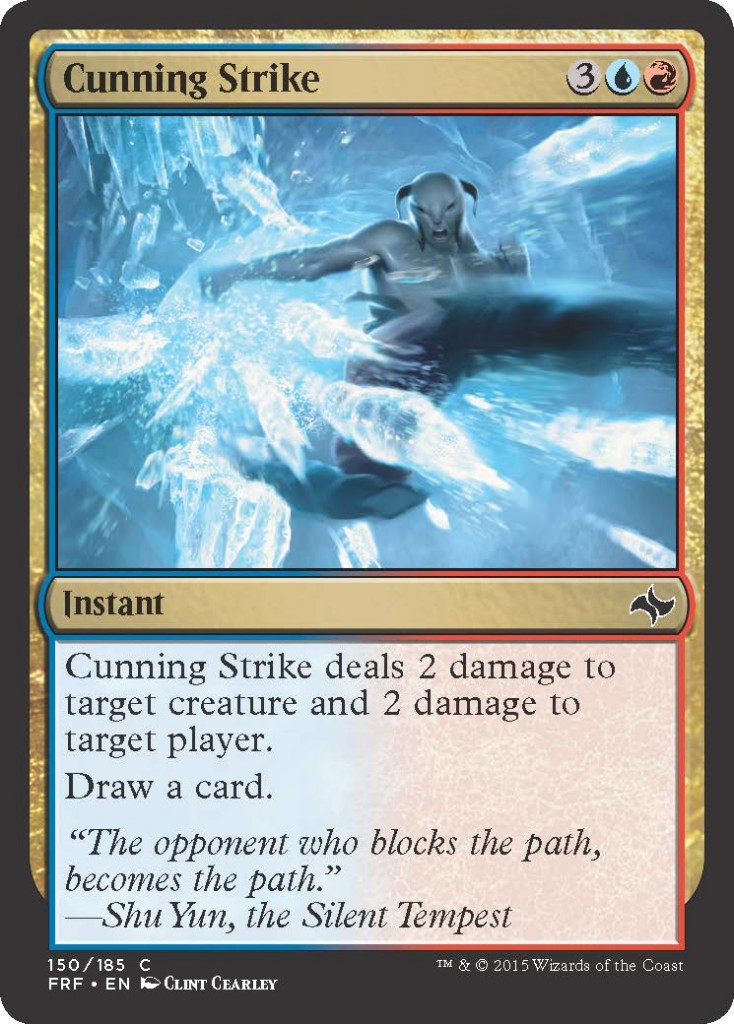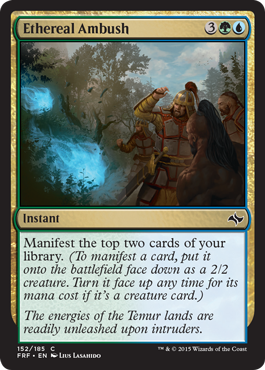His essential point is that Treasure Cruise is too similar to one of the most powerful cards ever printed - Ancestral Recall - and as such has no place in a format that caters to new players wishing to learn the ropes in a relaxed and simplified environment.
He then wanted to respond to three major objections. The first objection he listed was that Treasure Cruise is not always cast for a single mana. Even so, he concluded, the average cost is still going to be very low thanks to the presence of cheap cards to fill up the Graveyard.
You're all caught up. Let's take a look at the rest of his argument, in his own words:
2) WoTC didn't ban Cruise for normal Standard.
Aside
from the obvious counter-point that I will soon make, namely that
Standard != Standard Pauper, Wizards does not ban for the PRE community
on Magic Online. Thus, don't expect them to have studied any fringe
format like Standard Pauper and determined what's best for the players
of such a format. And from what it seems, even this aside, they are late
to the party anyway - how long did Treasure Cruise need to twist Modern
for them to ban it? How about Jace for Standard? Their bans are not
proactive enough. Additionally, it is the norm for PRE players of fringe
formats = like tribal, heirloom, or silverblack back in the day - to
devise their own banlists, considering the players there are more
interested and versed in their respective formats than wizards are,
considering that they - from what is obvious now - don't even bother
playtesting for modern. Where is Standard Pauper's banlist? Relying on a
group of people who are neither interested nor playtesting the format
to tell you what's fair doesn't seem like a good idea.
As I
mentioned before, some people oppose a ban of Cruise, and point to its
legality in Standard. The counter-argument is deceptively simple -
namely that Standard is not the same as Standard Pauper - that
more clarification is needed. Well, what do I mean? I mean,
specifically, the decks played in the meta, and the overall power-level
of cards that can fight against Cruise in aggro is way stronger. Aggro
decks in normal standard can work at breakneck speed, and make the aggro
decks of standard pauper look like a joke. Normal standard aggro decks
are capable of punishing control decks that run cruise in a way that
standard pauper cannot. Let me ask the audience - where is goblin
rabblemaster in standard pauper? monastery swiftspear? stoke the
flames? Standard Pauper is a format where control still gets to use its
#1 card from Standard, while aggro decks get neutered and lose all of
their star players. Compare a standard control deck to a standard pauper
control deck - you will notice at least some of the commons
overlap. Now do the same for aggro decks, and you will see far
fewer overlap, in comparison. What does this tell you?
The
two most popular aggro decks in standard pauper that are fast enough to
beat control decks with cruise - namely, WW tokens and mono red - have
another big issue to deal with: Scouring Sands. Make no mistake about it
- as if Cruise is not bad enough - Control has access to what is, in a
format rife with creatures of 1 toughness and of an overall low power
level for their CMC, a Wrath of God for half the mana. Call me crazy,
but I think that in a format where only commons are allowed, a deck
shouldn't have access to Power 9 light and a big board sweeper. These
two cards - Scouring Sands and Treasure Cruise - make playing aggro
always feel like an uphill battle. It isn't just a race until Cruise
hits; it is also hoping your opponent doesn't draw that single card that
hoses your entire deck. Given the fact that people are beginning to run
Scouring Sands maindeck, it is a strong testament as to how strong that
card is at nerfing decks and clearing the board long enough for a cheap
cruise to the Galapagos to hit. The aggro decks that can beat Cruise in
normal standard do not fold as easily to Scouring Sands.
3) Aggro decks are still better than control
This
statement is neither true nor relevant. Control decks are taking top
spots recently. The meta-game is shifting away from aggro and more
toward control. Ask any player that plays WW or mono-red aggro - that
deck rolls over to Scouring Sands. As an aggro player myself, I can tell
you, the match-up feels unfair when standard pauper has access to a 2
mana board sweeper and a power-9 level type card. Even if aggro
decks were somehow better than control, does that mean that a singular
card as broken as cruise should be allowed? Same is true for any card in
any deck, no matter who is top dog at a given time.
Resident
writer adept gwyned - purveyor of Standard Pauper as a format and host
of MPDC - feels that R/W Boros - a type of aggro deck - is the strongest
overall in the format. This is a deck that works like hexproof auras in
normal pauper and modern, except the creatures don't have hexproof.
This deck doesn't automatically roll over to Scouring Sands, however,
make no mistake - this deck too has severe weaknesses that control can
exploit. Firstly, it isn't as fast as other aggro to shut the game down
before Cruise delivers too much card advantage to the opponent and -
more importantly - since the deck relies on beefing up creatures with
enchantments, it is more vulnerable to the counterspells and bounce that
control runs, by virtue of having a fewer creature base than other
aggro decks have, like WW.
4) Cruise can be a dead card in hand if you cannot cast it
What
card doesn't have situations where it is completely useless? Even
broken cards are not broken 100% of the time. (Umezawa's Jitte) and
(Skullclamp) - two of perhaps the best equipment ever printed that have
also experienced the banhammer by Wizards - are also dead cards if the
player has no creatures. The point is - when the card has a situation
where it is good - it is *too* good.
In sum,
Control is the best archetype in the format, and Cruise is the best card
in the format. Scouring Sands - another tool for control and probably
the second best card in the format - allows for a cheap wrath of god to
make sure control has enough time to set up a cruise, and Boros aggro is
like a hexproof deck with no hexproof, making it susceptible to the
multiple bounce spells that control runs as well as countermagic.
Finally,
aside from overall level of power, I would like to say that Cruise
itself destroys the spirit of Standard Pauper. I think Cruise is broken
at any rarity, but by having it as common, it feels like a special
affront and slap to the face to the overall theme and feel of Standard
Pauper, namely that the cards are overall balanced and not too strong,
to make for a format that is both fun and fair for players of all skill
levels. I cannot remember the last common that was printed that was
anywhere near as powerful as Cruise, and cards similar to cruise are of
different rarity. Off the topic of my head, (dig through time) is a
rare, and (ancestral visions) - a card, much like cruise, that was
supposed to be the modern r&d update on ancestral recall - is also a
rare. Both, incidentally, happen to be banned in Modern too. But by
having such a card in Standard Pauper - the weakest constructed format
in Magic - one that is better than 99% of rares ever printed, it seems
to be the polar antithesis of the heart and soul of this casual fringe
format.
Send the cruise to find treasure in the Bermuda Triangle, and good riddance to it. Thanks for reading.
If you have an opinion of this matter, I encourage you to make your voice heard. We had some great comments left in the previous post, so I'd love to see the conversation continue here. Thanks for reading!





